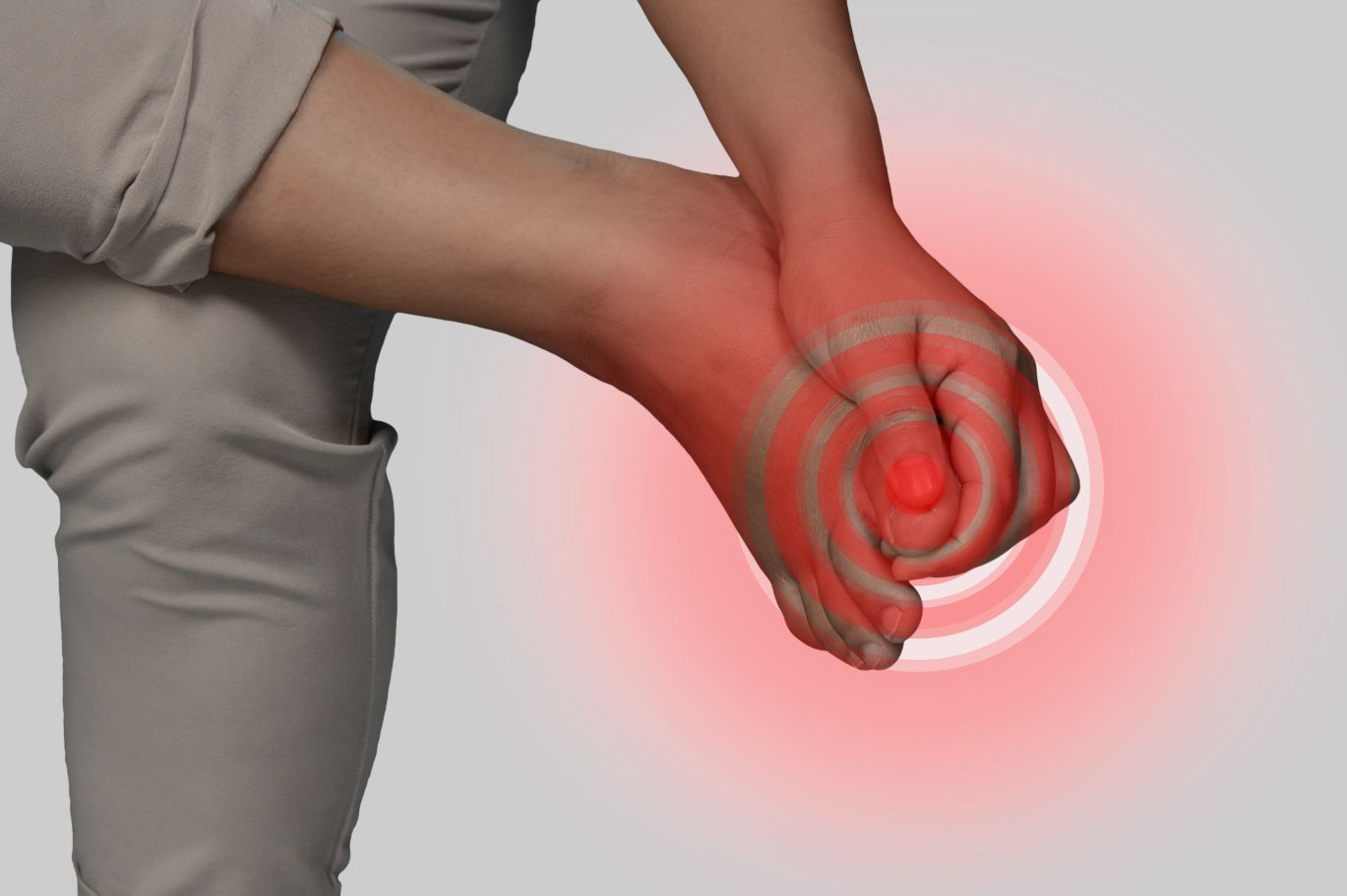
Onychomycosis is the medical name for fungal nail infection. It causes the nail to become thickened and discoloured, turning white, black, yellow or green. As the infection progresses the nail may become brittle, with pieces of nail breaking off. It can affect all or part of the nail and can affect one or more nails. Fungal nail infections are four times more common in toenails than fingernails and also become more common as you get older. In some cases, the infection can cause pain and discomfort if it is not treated, although this is rare.
Causes
Athlete’s foot is a fungal skin infection usually affecting the skin between the toes. About a third of people with athlete’s foot will develop a fungal nail infection.
Fungi grow and thrive easily in warm, damp environments, so infection is more likely to occur after wearing trainers for long periods or if you often have hot, sweaty feet.
You're more likely to develop a fingernail infection if your job involves a lot of hand washing or your hands are in water for long periods of time. This is because the skin at the base of your nail can become damaged and is more likely to become infected.
Other factors that can increase the risk of nail infections include:
 using artificial (cosmetic) nails,
using artificial (cosmetic) nails,
 nail damage,
nail damage,
 constant nail-biting,
constant nail-biting,
 having a health condition such as diabetes or psoriasis,
having a health condition such as diabetes or psoriasis,
 being immunosuppressed (having a weakened immune system),
being immunosuppressed (having a weakened immune system),
 being in poor general health,
being in poor general health,
 living in a warm and humid climate,
living in a warm and humid climate,
 smoking.
smoking.
Treatment
Treatment may not be necessary for mild infections, however, if the infection is not treated, it may spread to other nails.
Antifungal nail paints e.g. Curanail -
These are available over-the-counter in your local totalhealth pharmacy. They are painted onto the infected nail, usually once a week. Treatment must continue until the infected nail has completely grown out. This can take up to six months for fingernails or twelve months for toenails. Antifungal paints will not kill fungal skin infections such as athlete’s foot and these must be treated separately using antifungal creams and powders.
Nail removal -
Canespro is an over-the-counter product that contains 40% urea. It is applied to the infected nail daily for 2 – 3 weeks. The infected nail is softened and removed until no more infected parts of the nail are remaining. Once the infected nail is removed, the nail bed is treated with an antifungal cream.
Antifungal tablets -
These can be prescribed by your doctor usually if the infection is severe or topical treatments have failed to work. Treatment can take several months and must be continued until the infection is completely cleared. Stopping the medication too early can mean the infection can return.
totalhealth Pharmacist's Advice
 Keep your feet cool and dry, and wear shoes and socks that allow your feet to breathe.
Keep your feet cool and dry, and wear shoes and socks that allow your feet to breathe.
 Wear clean cotton socks and avoid wearing trainers.
Wear clean cotton socks and avoid wearing trainers.
 Treat athlete's foot with antifungal medicine as soon as possible to avoid the infection spreading to your nails.
Treat athlete's foot with antifungal medicine as soon as possible to avoid the infection spreading to your nails.
 Clip your nails to keep them short.
Clip your nails to keep them short.
 Use a separate pair of clippers or scissors to cut the infected nail to avoid spreading the infection to other nails.
Use a separate pair of clippers or scissors to cut the infected nail to avoid spreading the infection to other nails.
 Wear well-fitting shoes without high heels or narrow toes.
Wear well-fitting shoes without high heels or narrow toes.
 Maintain good foot hygiene.
Maintain good foot hygiene.
 Wear clean shower shoes or flip flops when using a communal shower.
Wear clean shower shoes or flip flops when using a communal shower.
 Consider seeking treatment from a podiatrist if thickened toenails cause discomfort when walking.
Consider seeking treatment from a podiatrist if thickened toenails cause discomfort when walking.
 Consider replacing old footwear as it could be contaminated with fungal spores.
Consider replacing old footwear as it could be contaminated with fungal spores.